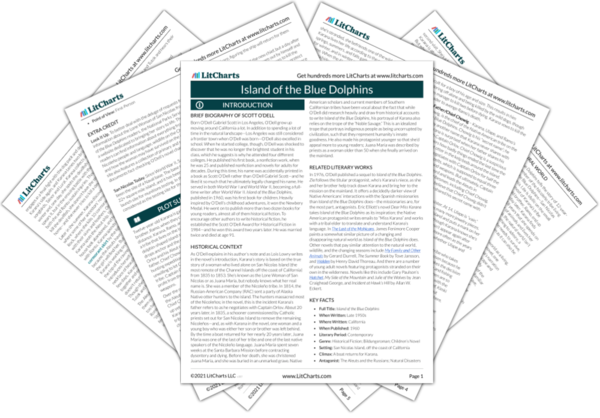Historically, missionaries were sometimes violent to native populations, forcing them to give up their native languages and cultures. Even though Karana is happy to be around people, forcing her to change out of her beloved cormorant skirt and into this scratchy dress points to the possibility that her happiness might be short-lived. She’s getting what she wants in one respect, but the change of clothes suggests she’s also going to have to give up many things she holds dear to leave the island.
